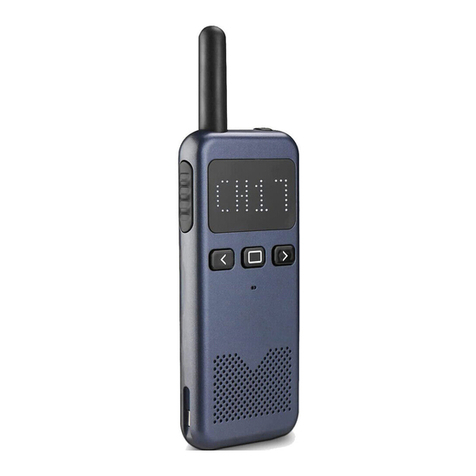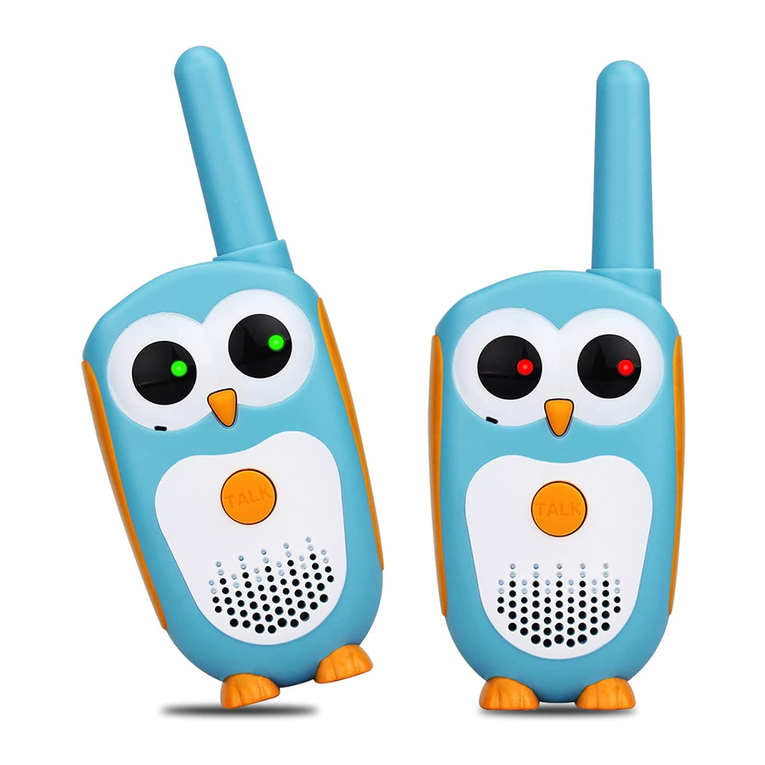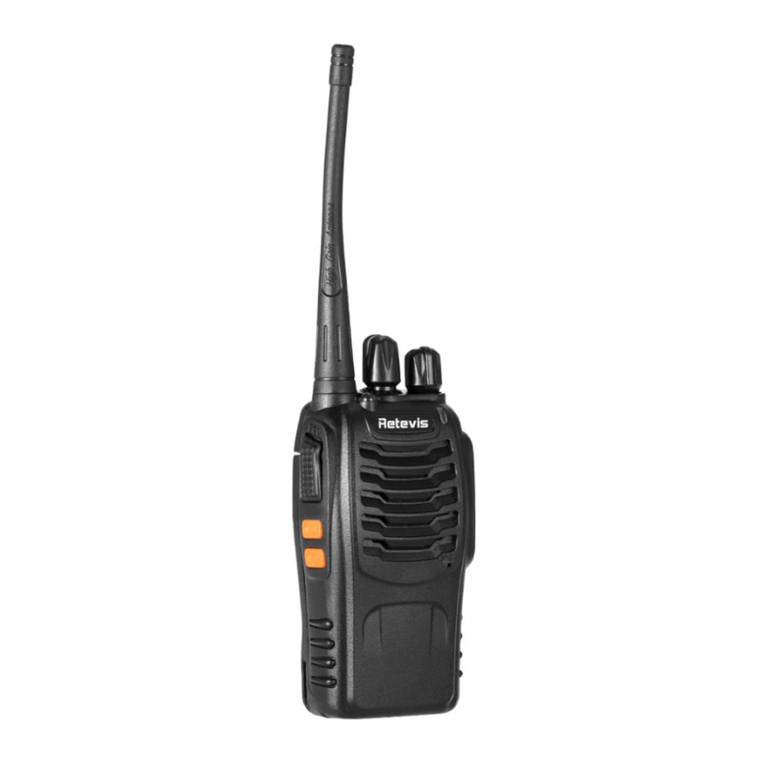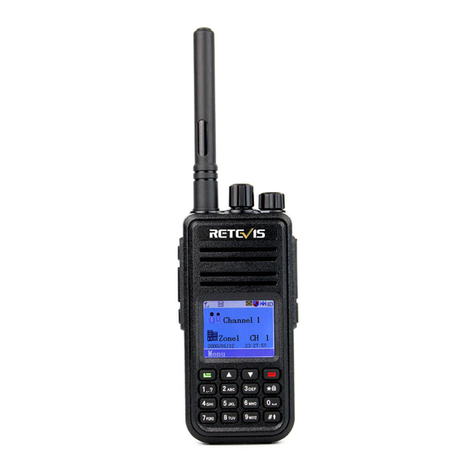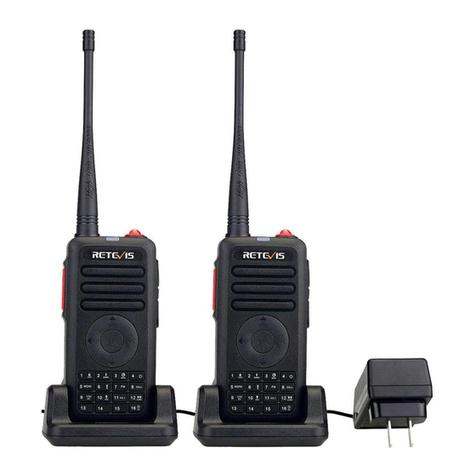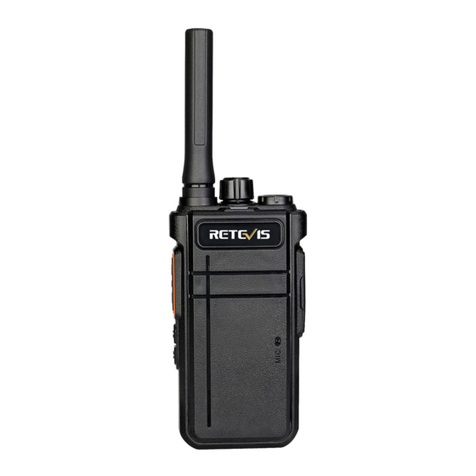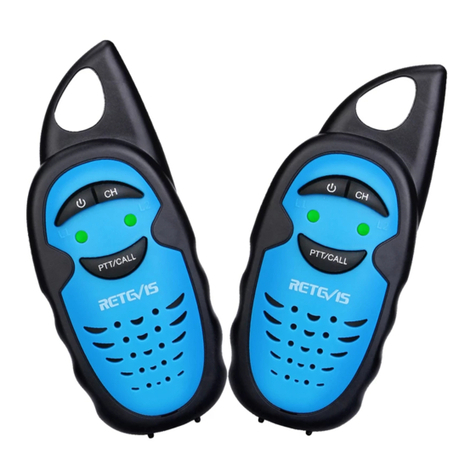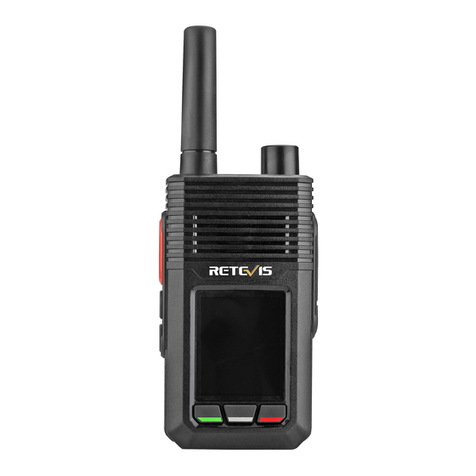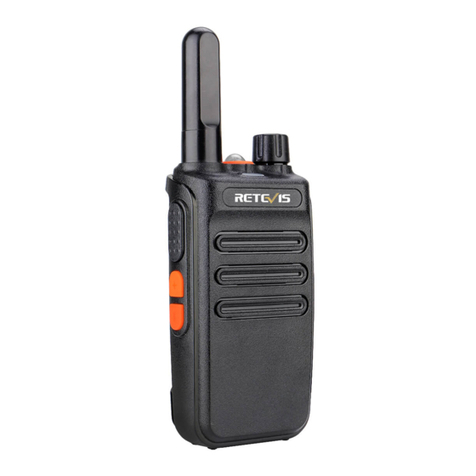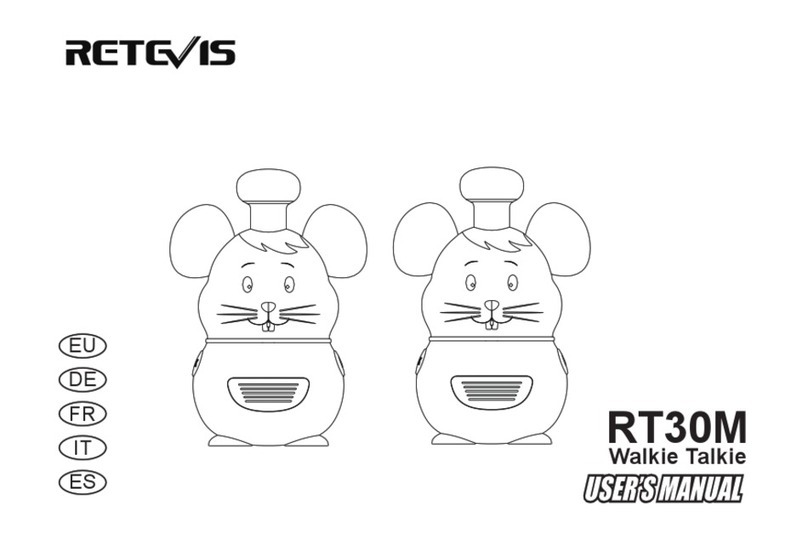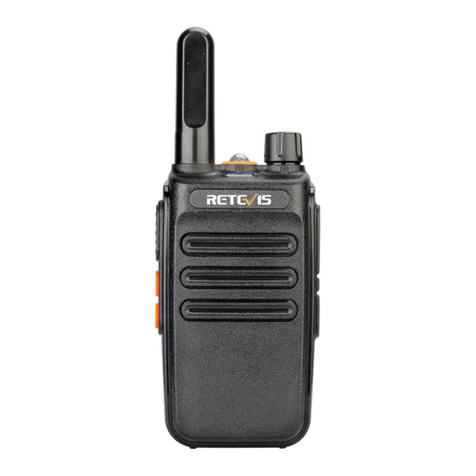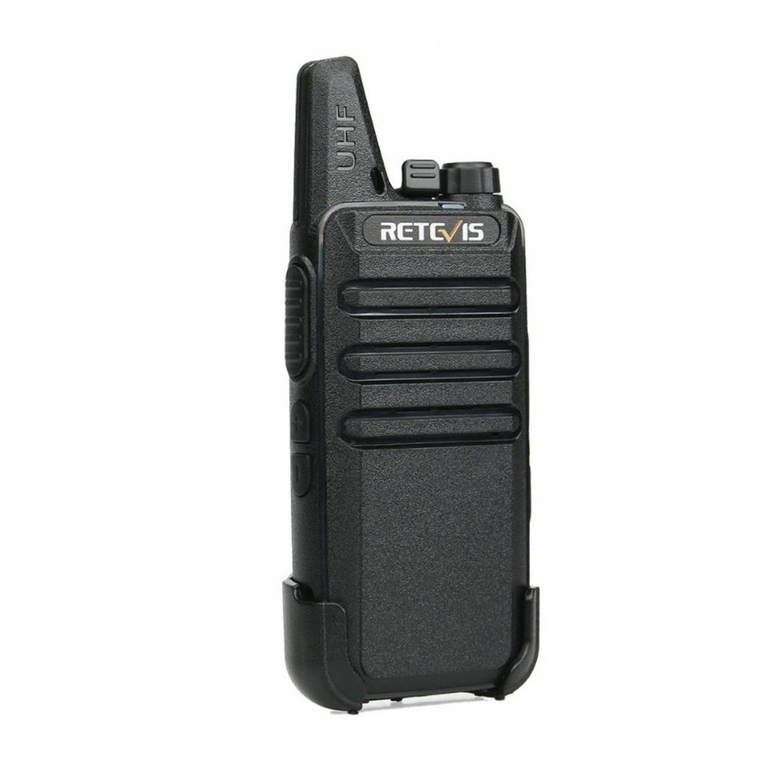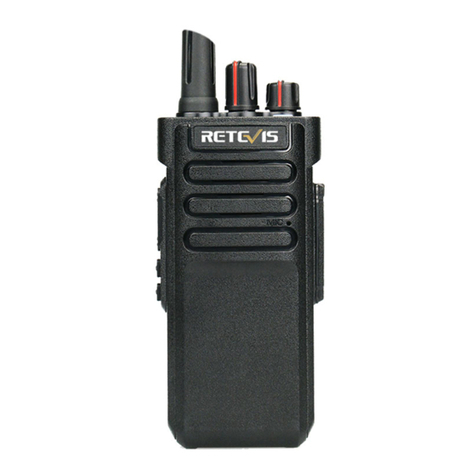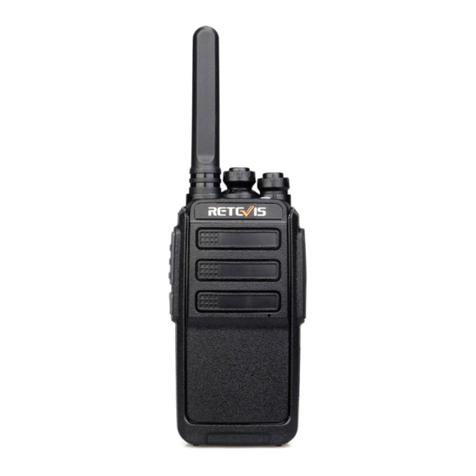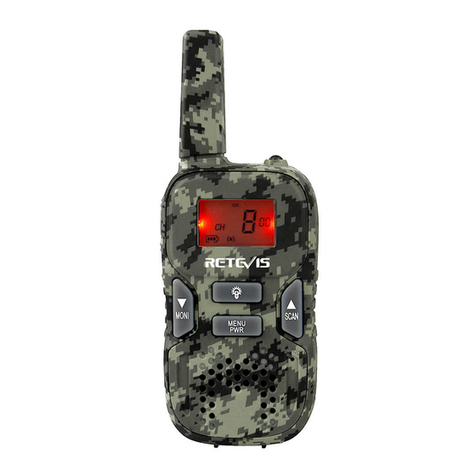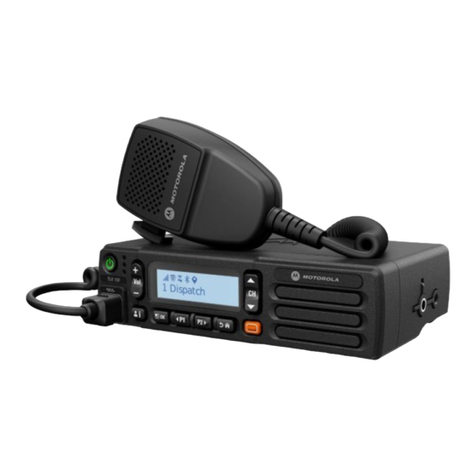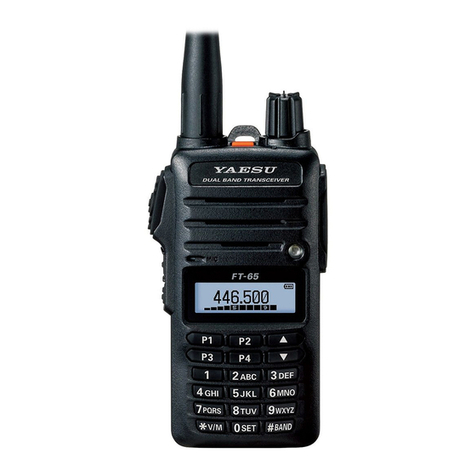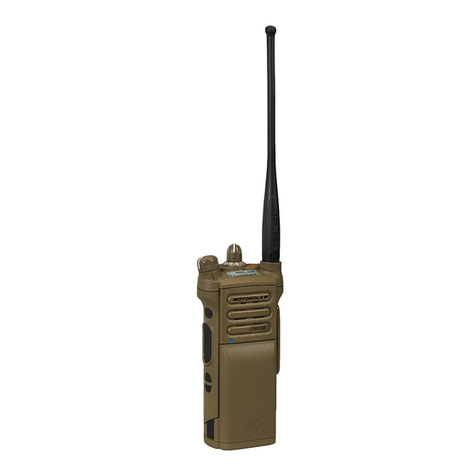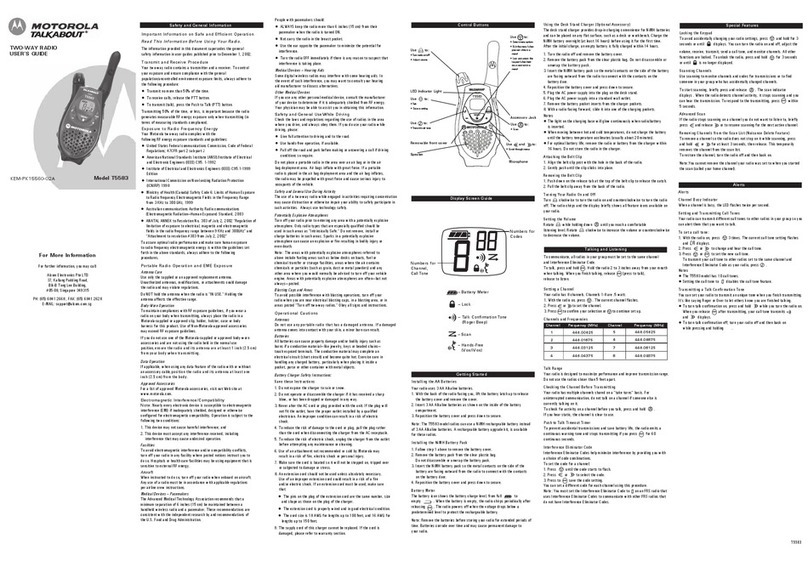
5
Removing the Three AA NiMH Rechargeable Battery
1. Turn the radio o.
2. With the back of the radio facing you, lift the battery cover latch up and remove the cover.
3. Close the battery cover rmly.
Note:
• Be careful when removing NiMH batteries. Do not use sharp or conductive tools to remove either of these batteries.
• Remove the batteries before storing your radio for extended periods of time. Batteries corrode over time and may
cause permanent damage to your radio.
• Do not mix old and new batteries and Do not mix alkaline, standard (carbon-zinc) or rechargeable (ni-cad, ni-mh,
etc.) batteries.
Battery Capacity Maintenance
1. Charge the NiMH batteries once every 3 months when not in use.
2. Before placing the radio in storage, remove the battery.
3. Store the NiMH batteries in temperature between -20 °C to 35 °C and in low humidity. Avoid damp
conditions and corrosive materials.
Using the Micro-USB Charger
The micro-USB charger is a handy port that allows you to conveniently charge your NiMH battery. Use
certied adaptor(5V, ≥1A). Do not attempt to charge alkaline batteries.
1. Make sure your radio is turned OFF.
2. Plug the micro-USB cable into the micro-USB charging port on your radio. Connect the other end of the
micro-USB charger to wall power outlet.
3. The battery meter on LCD will move to indicate the battery is charging.
Note:
It is recommended to power OFF your radio while charging.
When moving between hot and cold temperatures, do not charge the NiMH batteries until the battery
temperature acclimates (usually about 20 minutes).
For optimal battery life, remove the radio from the charger within 16 hours. Do not store the radio while
connected to the charger.
Turning your Radio On and O
1. Press and hold on the button to turn your radio ON/OFF. In the ON position, the radio chirps and briey
shows all feature icons available on the radio.


